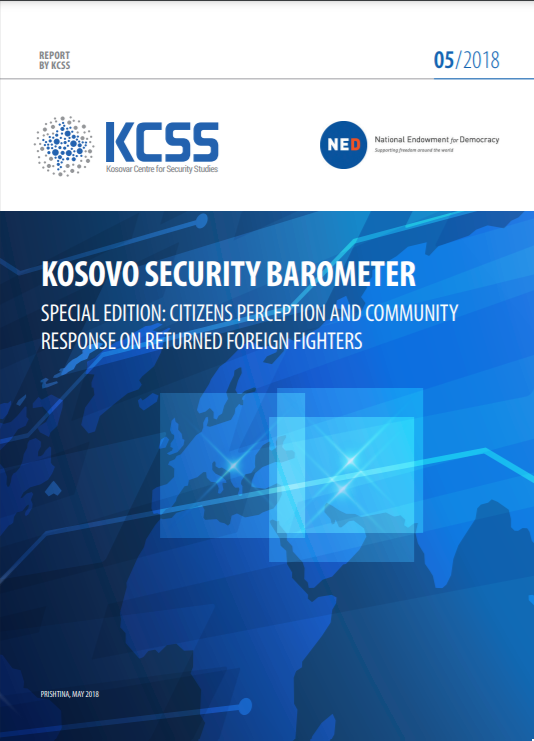21/05/2018

Kosovar Centre for Security Studies (KCSS)
National Endowment for Democracy (NED)
Vesë Kelmendi
The report is divided in three parts. The first part of the report consists of a general description of public perception on violent extremism based on the 2017 data-gathering efforts. This is categorized on ethnically-motivated threats, religiously-based violent extremism and politically motivated violent extremism. In addition, the report analyzes respondents’ attitudes toward national and religious causes.
The second and the main part of the report represents the respondents’ perceptions of the returned former fighters. It assesses threat and risks, the community willing to accept them back where they live and general perceptions regarding the treatment of the returned former fighters. The findings of this report are categorized based on the following characteristics of the respondents: residential area (rural/urban), a community where they live, gender and age.
Lastly, the third part of the report analyzes trust toward the government, assembly, courts, Prosecutor’s office and Kosovo Police, all key stakeholders in the implementation of Kosovo’s Strategy on Countering Violent Extremism. The report also summarizes the trust as it trends over the years of the Islamic Community of Kosovo, known as BIK.